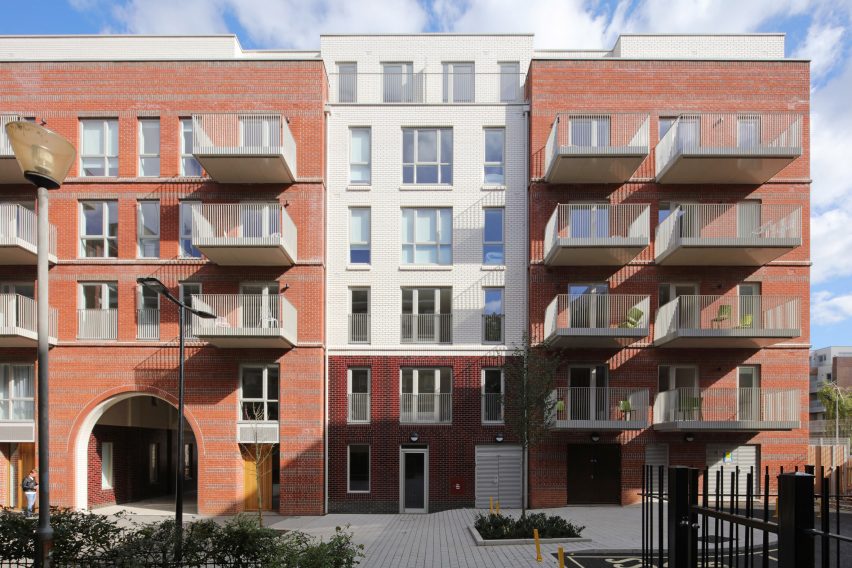
Matthew Lloyd Architects' Bourne Estate was designed for "extreme longevity"
Continuing our Social Housing Revival series, we revisit the regeneration of the Grade II listed Bourne Estate in central London, completed in 2018 by local studio Matthew Lloyd Architects.
Situated in the London borough of Camden and commissioned by the local council, the project by Matthew Lloyd Architects saw the demolition and replacement of an existing block and a reorganisation of the site's layout.
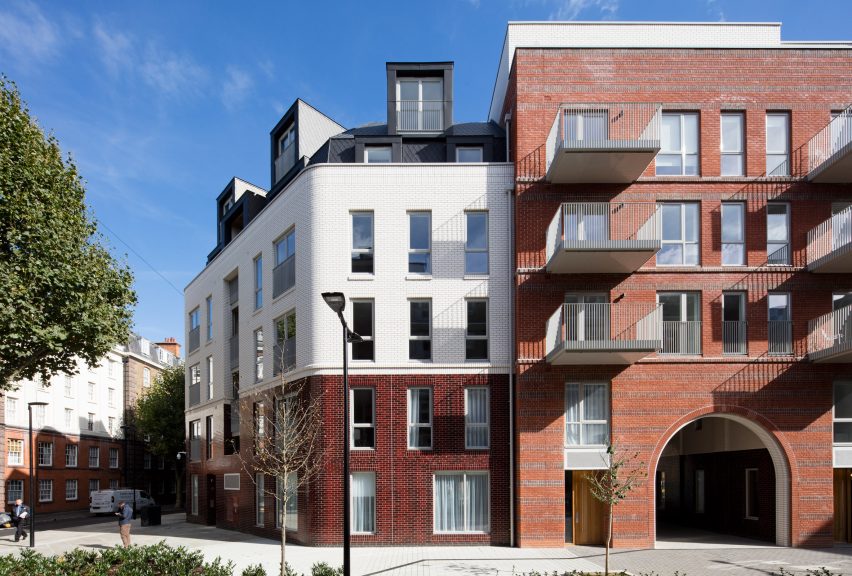
The studio said it wanted the project to be a "contemporary and contextual interpretation" of the intimate Edwardian estate.
Originally constructed in 1905 by the London County Council, the Bourne Estate was among the UK's earliest council-housing schemes. Its design was reportedly used as a model for public housing built in Austria after the first world war as part of the influential Red Vienna movement.
Defined by brick and ceramic-tiled facades, protruding and inset balconies, and rhythmic facade openings, Matthew Lloyd Architects' intervention comprises a total of 75 mixed-tenure homes spread across two blocks. Both blocks are lined with deck-access balconies overlooking communal and intimate courtyards designed by Dally Henderson Landscape Architects.
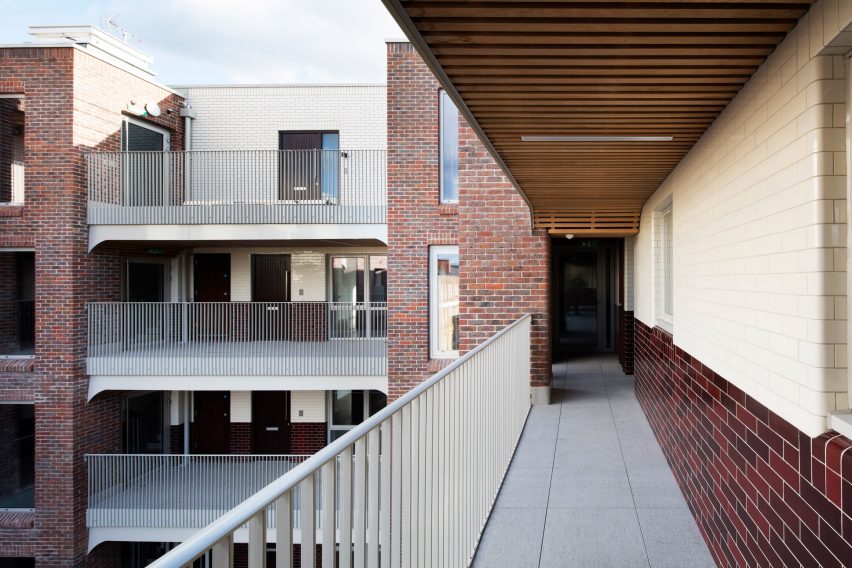
With 50 per cent of the new residences sold privately to cross-fund the social housing, the studio strategically designed tenure-blind flats.
The resulting consistent appearance and layout among the different housing types was intended to promote cohesion between the socially rented and private leasehold flats.
"It's very hard to build in that kind of context," studio founder Matthew Lloyd told Dezeen.
"It had to be architecture that responded to the architecture of the estate, so challenges [were] around what the building should look like, how it can fit into these vacant sites, and also how we make the tenure mix."
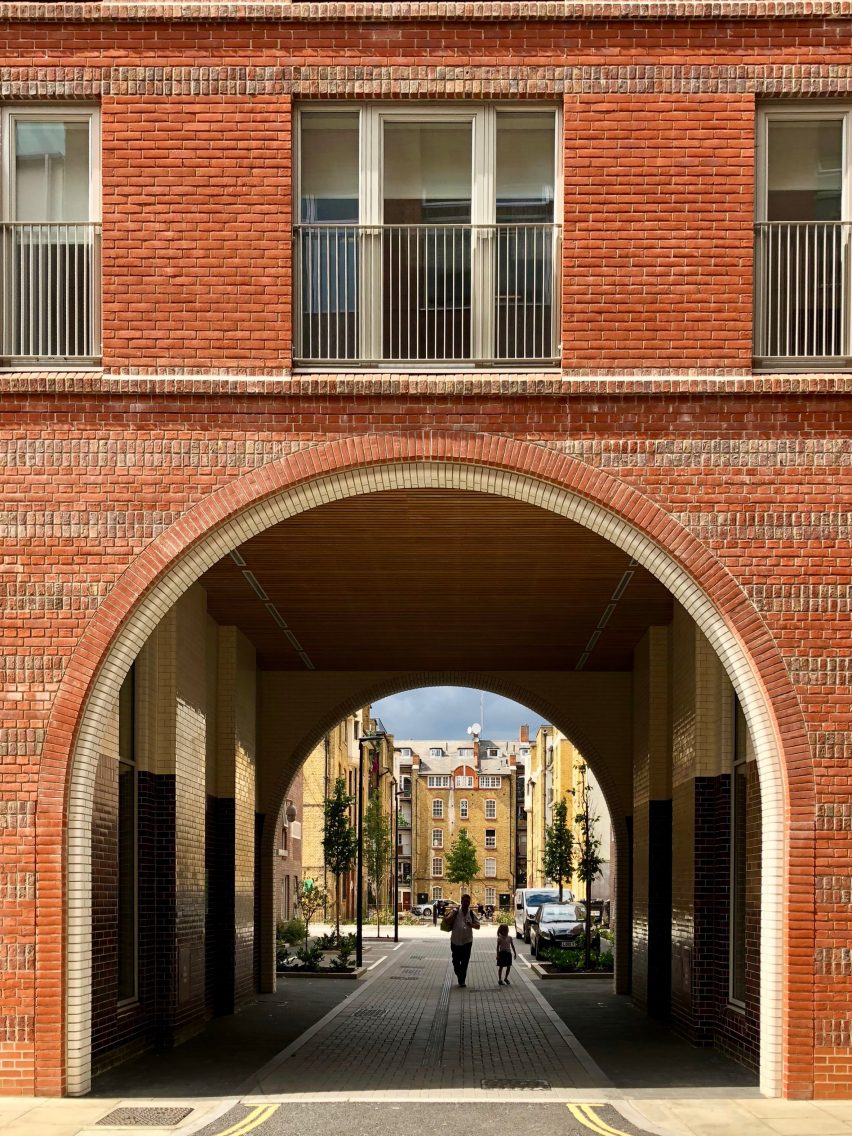
In order to preserve the setting and character of the existing and protected estate, the studio used a combination of materials and details reminiscent of the original buildings – most noticeably in the form of brick arches.
"We had a very good planning authority, Camden Council planners, who wanted us to produce a sort of sympathetic architecture without being pastiche and old fashioned-looking," Lloyd said.
"We didn't want the buildings to look classical, and we wanted to produce an architecture that had a kind of modernity to it," he added.
Decorative ceramic tiling was used across both the interior and exterior facades in reference to the terracotta tiles of the original estate, while others were finished in a red, patterned brick.
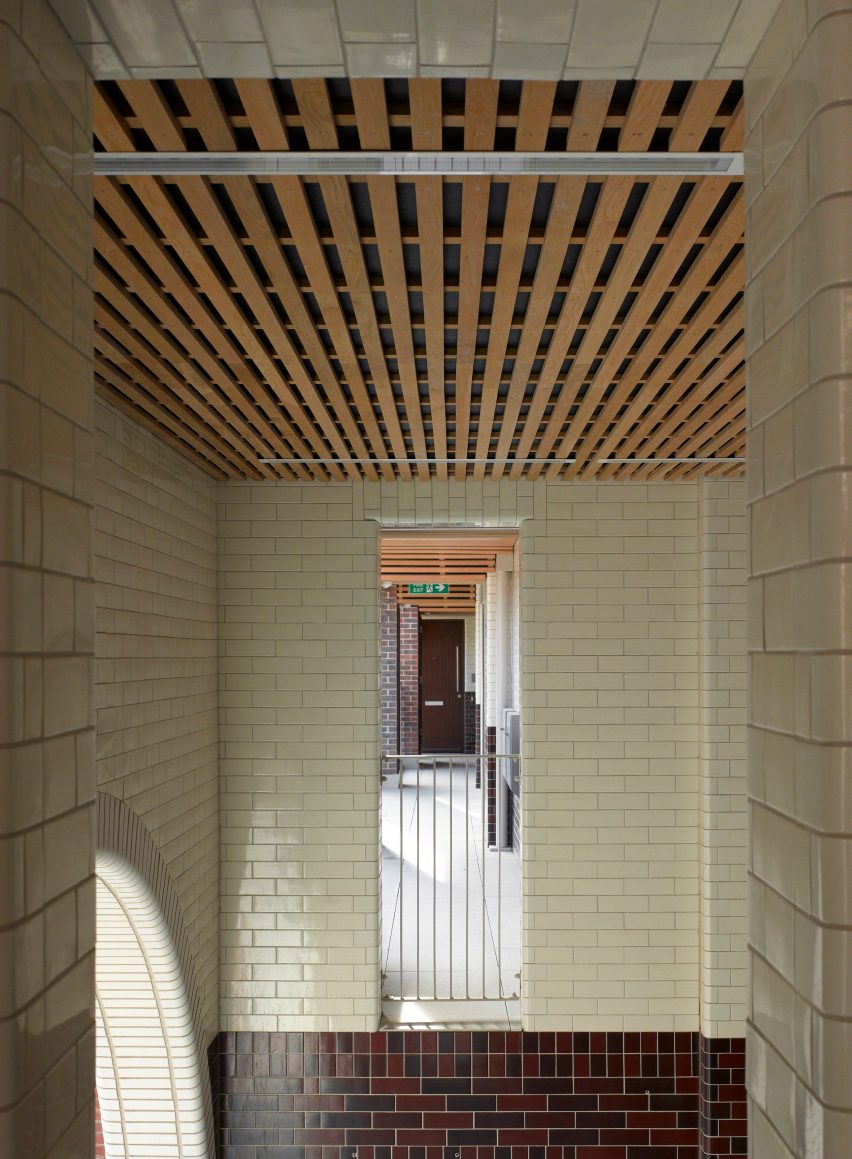
Corridor entrances into the estate are adorned by large arched openings made from detailed brickwork that similarly mimic the details of original estate. According to Lloyd, the creation of the arches was influenced by residents.
"Twenty years ago, nobody put arches into building and nobody put arches anywhere near housing because they thought it was retro," he said.
"So we were really worried about the arches just killing the architecture. But we did them and they're almost this kind of signature of the building."

In an effort to create a long-lasting structure requiring minimal maintenance, the studio used ceramic tiling throughout the common spaces – which is not only durable, but also insusceptible to graffiti.
"If you have painted plaster common parts, with people going in and out, you have to repaint every five years or 10 years. Similarly, if you have carpet it gets worn out," Lloyd said.
"None of our materials in our common parts will need to be changed for the foreseeable future. So yes, it was more expensive, but the maintenance is extremely low."
"[This materiality] was something that I think sets the Bourne Estate apart from other public housing of the time; in my view, it's got extreme longevity," he added.
Maisonettes line the ground floor of the two blocks, which are strategically positioned to help activate the outdoor communal areas.
Meanwhile, deck access is provided for the flats on the upper floors, with walkways that wrap around the estate and offer views over the communal courtyards.
At the building's front, balconies protrude from the facade over the streets below, while other flats have smaller inset balconies.
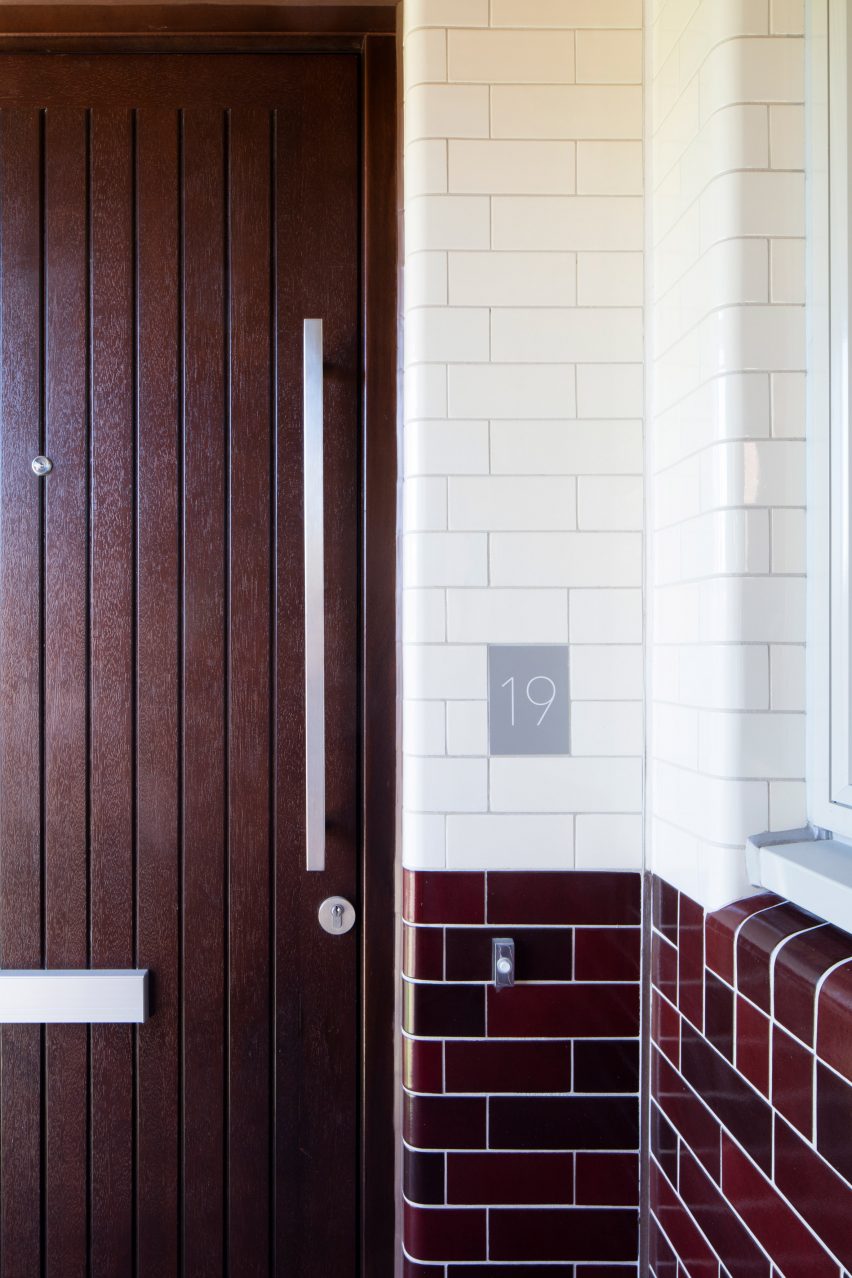
The public competition to redesign the listed estate was determined by a panel consisting of both residents and members of Camden Council.
Close communication between the residents, client and architects enabled the community to comment on and influence aspects of the design throughout the three-year long construction process, Lloyd said.
Since its completion, the project has won multiple awards, including the RIBA London Award 2018 and at the Housing Design Awards 2018 and Camden Design Awards 2017.
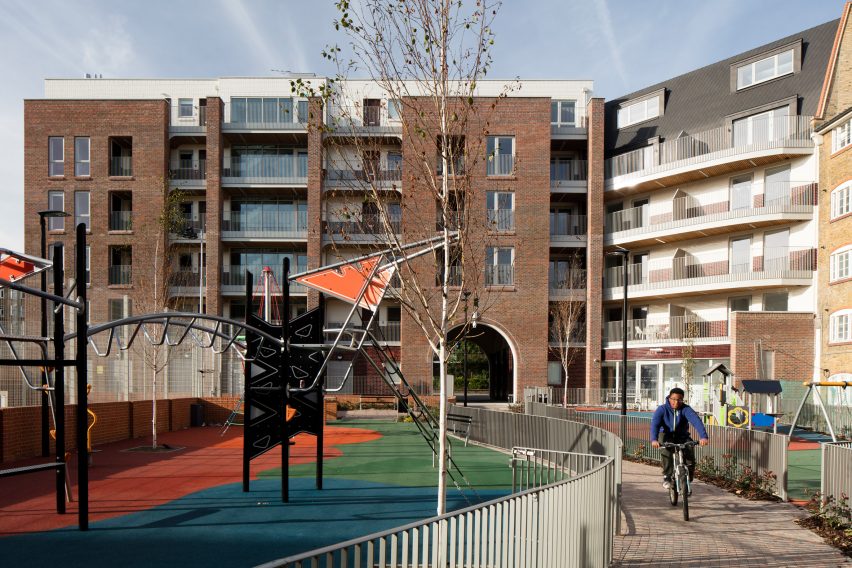
Reflecting on the redevelopment, Lloyd highlighted the project's balancing of responding to the estate's historical context, while still introducing a subtle sense of modernity.
"I think I'm proud of people's reaction to it more than anything," he said. "Because it's not radical architecture, it's not ultra-modern. It's quite contextual."
"It's an enduring project. It will last and it'll blend into the city, like all good housing should do."
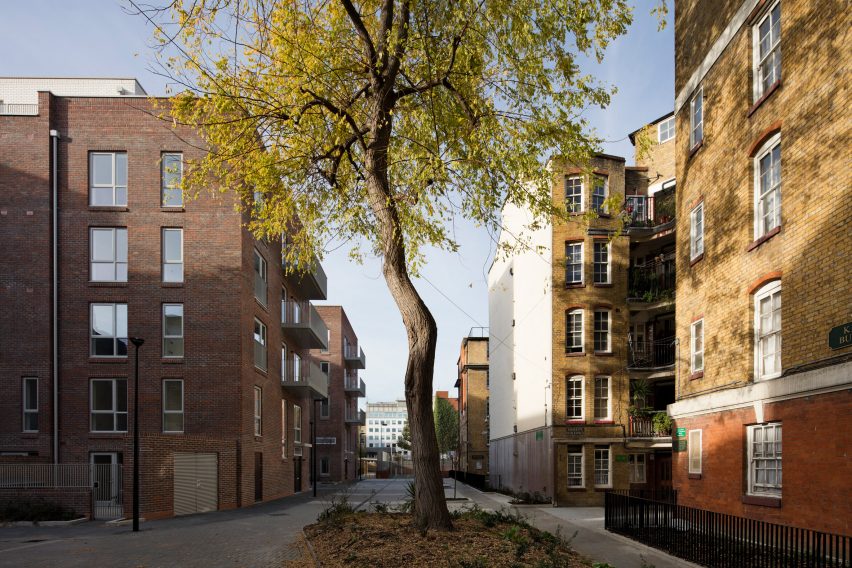
Recognised for their work designing contemporary and contextual architectural projects much like the Bourne Estate, Matthew Lloyd Architects is among a wave of architecture practices reviving social housing across the UK.
"I think we've got architectural heroism back in housing in a way that's good," Lloyd said.
He praised the establishment of a "new London vernacular" for social housing, which is often defined by brick detailing and deep, inset balconies, and suggested social housing has moved away from the "nameless, faceless" architecture of the 1990s.
"Architectural housing design is as good as I've known it in my career," he added. "We're not producing nearly enough of it."
The photography is by Benedict Luxmoore unless otherwise stated.
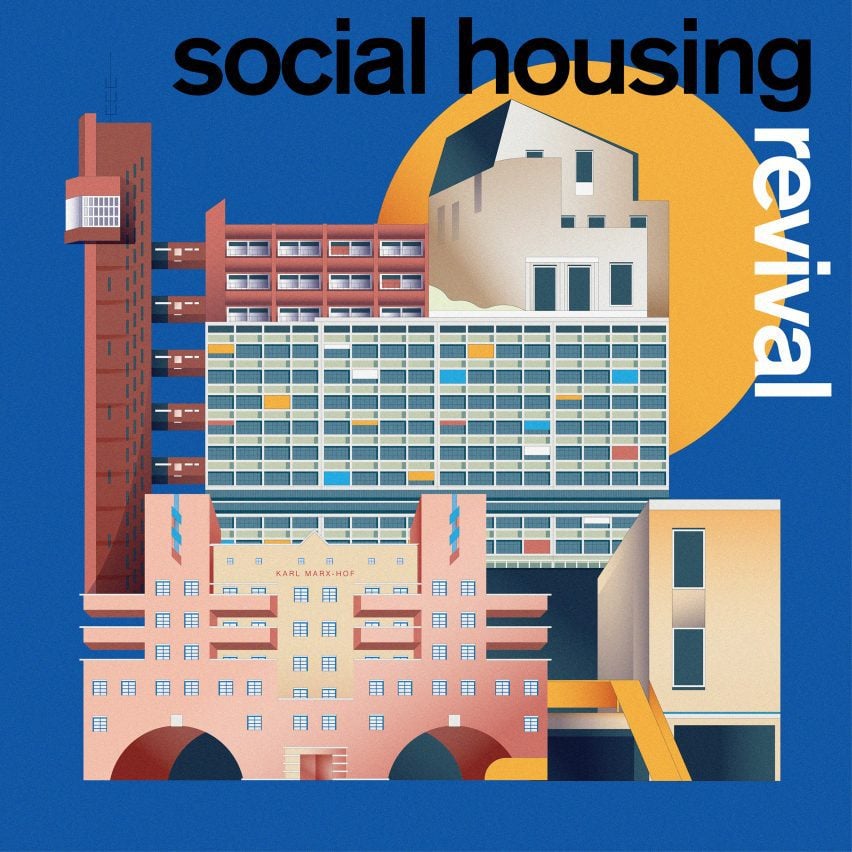
Social Housing Revival
This article is part of Dezeen's Social Housing Revival series exploring the new wave of quality social housing being built around the world, and asking whether a return to social house-building at scale can help solve affordability issues and homelessness in our major cities.